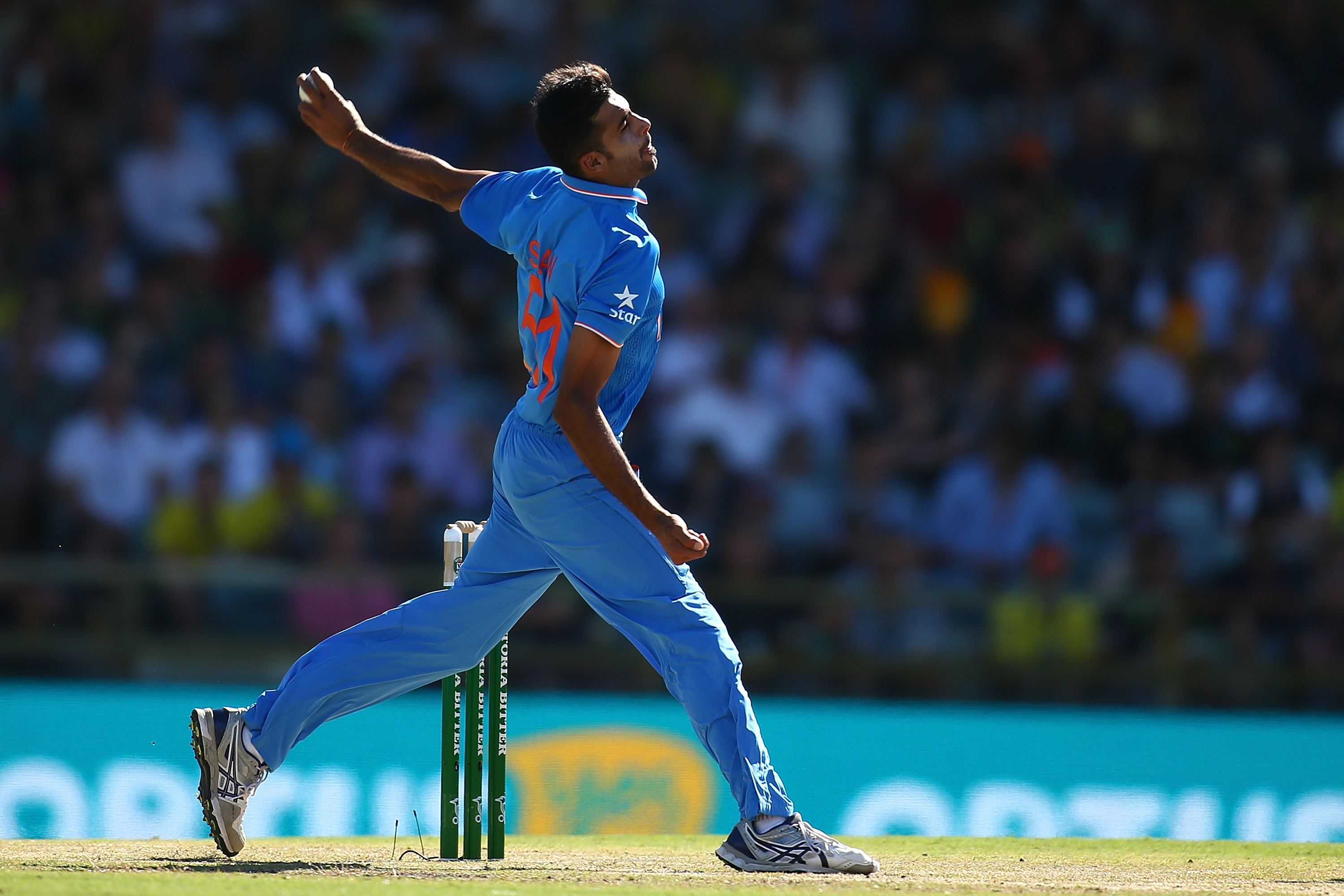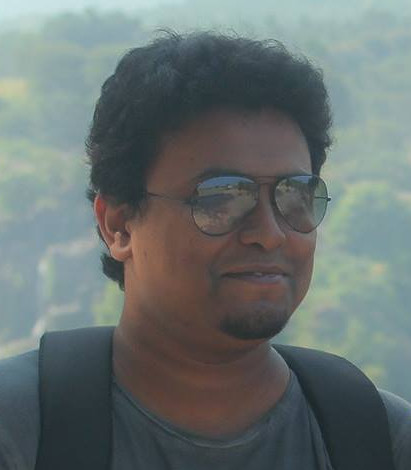Barinder Sran | The journey from Bhiwani's boxing ring to Harare

Almost 15 years ago, India took a young 22-year-old left arm pacer to Zimbabwe for his first full tour, and he impressed with some stunning performances, especially with his ability to bring the ball into the right-handers. On Monday, a 23-year-old left arm pacer showed similar abilities as he picked up four wickets on his T20 debut against Zimbabwe. Barinder Sran has shown the same promise which Ashish Nehra did all those years ago, and if he is able to maintain his fitness, unlike Nehra, he could have an even more impactful career.
His journey, which began at the Bhiwani Boxing Club, was hard at first, messy in the middle, but after his showing at the Harare Sports Club, is seemingly heading towards a memorable future.
Born in Panniwala Morika, a small village on the border of Haryana and Punjab, Sran was the son of a farmer, who owned six acres of land. Haryana have produced some of the finest athletes over the years, and currently very few are grabbing the headlines as much as Vijender Singh, who has had an astonishing start to his professional boxing career. The Olympic medallist's career started out at the Bhiwani Boxing Club under the guidance of Dronacharya Award winner Jagdish Singh. Singh, a former national boxer, had produced boxers like a factory, and in an alternate time-line, Sran would have perhaps ended up being on a glorious list, which consists of the likes of Akhil Kumar, Jitender Kumar and Vijender.
Just seven years ago, Barinder would have been found sweating it out at local village grounds with big gloves in his hands. Now the gloves are off, and the wrists are being used to torment batsmen at the other end.
We often come across articles and television advertisements titled: “This will change your life forever”. Late night telemarketing brands show creepy-looking people admitting to how his/ her life has never been the same again. Kings XI Punjab can make that claim as well–for once.
We often come across articles and television advertisements titled: “This will change your life forever”. Late night telemarketing brands show creepy-looking people admitting to how his/ her life has never been the same again. Kings XI Punjab can make that claim as well–for once.
The Preity Zinta-owned IPL franchise have not accomplished a great deal since coming to existence. In fact, perhaps their greatest contribution to Indian cricket, other than making KC Cariappa unbelievably rich, was to put up an advertisement for trials six years ago. The timing was perfect. Sran was just back at his home from Bhiwani for his summer vacation, and his eyes fell on that advertisement on a newspaper.
He might have started with boxing, but Sran had developed a secret love for cricket since his childhood. “When we used to go for boxing training, we used to see the Haryana cricketers practice and I always wanted to go and practice with them," Sran told cricbuzz in an exclusive earlier this month.
That advertisement by Kings XI Punjab finally gave him the window he needed to make the jump. He did not have a successful trial, but he was impressive enough to find himself in the Kings Cup. That acted as a catalyst, and Sran soon joined the KK Cricket Academy in Chandigarh.
He might have made a late move to cricket, but his rise was fast-tracked, though not always in the most conventional way of things. He won the North India leg of the Gatorade Speedster contest and then the India U-19 leg of the Speedster, which earned him a place at the ICC academy in Dubai.
From failing in the KXIP's trials, being asked to bowl at the nets for the visiting teams by the Punjab officials, playing inter-district cricket for Mohali, to being selected in the Punjab Ranji squad—all of these happened in the space of just one year, and it seemed like there was no stopping his ascension.
A bunch of injuries, including an ankle fracture, and Sran suddenly disappeared from the landscape for almost two seasons. It was depressing for the youngster, as he recuperated and learned how erratic fortune can be. Sports at its worst can be awfully lonely.
However, he soon experienced the other side of the coin. A bunch of injuries, including an ankle fracture, and Sran suddenly disappeared from the landscape for almost two seasons. It was depressing for the youngster, as he recuperated and learned how erratic fortune can be. Sports at its worst can be awfully lonely.
However, Sran found support from his family, and his return to the sport was through another trial. He attended open trials for both Rajasthan Royals and Mumbai Indians, and he impressed Rahul Dravid at the former. In fact, Dravid was surprised to find out that Sran had played just a single season of domestic cricket.
Rajasthan brought Sran at the IPL auction, and he was 'their' type of player. Young, inexperienced, raw, and prodigiously talented—the kind of player perfect for someone like Dravid to mentor. Rajasthan Royals usually worked on these talents in the nets for one season, before unleashing them at the world. The same happened for Sran as he made just one appearance for RR in that season in a crucial tie against the Kolkata Knight Riders, and it was not a debut to remember. He was not ready yet, and later Sran had admitted that the pressure got to him.
However, despite playing just eight List 'A' matches, Sran was picked for the ODI squad for the tour to Australia in January 2016. Vikram Rathour, who was the coach of Punjab when Sran played for them in 2011, was the national selector from the North Zone, and he made sure that the pacer got an opportunity to shine.
As a fast bowler, he could not have picked a better venue to make his international debut—Perth. The left armer picked up three wickets—Aaron Finch, David Warner, and Steven Smith—and he was unlucky to miss out on his fourth, when George Bailey escaped an appeal for a caught behind. However, the next two matches turned out to be disasters, as it was for most of the Indian players during that tour, and his weaknesses were laid bare in front of the world.
For a left-arm fast bowler, it is essential to swing the ball into a right hander in order to succeed at the international stage. One dimensional bowlers do not survive in this sport anymore. Sran was only angling the ball away from the right hander, and soon the opponents figured him out. His surprise factor wore off in the second match, and he went for plenty of runs.
Cut forward to the spell he produced against Zimbabwe at the Harare Sports Club, and you will see a bowler who has superseded his former self. Pace and youth do not last long, but the ability to learn and adapt does. Sran, who had confessed that he did not know anything about seam and wrist positioning, had picked up a lot in the last six months.
The IPL had served its primary purpose—to expose budding talents to international players. Rubbing shoulders with the likes of Ashish Nehra, Bhuvneshwar Kumar, and Tim Southee helped him to learn the art of swinging the ball, how to land he ball on the seam, and more importantly, how to control it. In that spell in the second T20I against Zimbabwe, Sran found the right length to extract that swing. He was pitching it up like never before, and it was a conscious effort on his part.
He is a decent death bowler as well, someone who is really consistent in finding the yorkers. James Faulkner, one of the best death bowlers currently, taught him how to bowl the slower deliveries, and although he is yet to master it completely, it once again highlights his ability and willingness to learn.
During his Rajasthan Royals days, Dravid believed that Sran would be ready by the 2016 edition of the IPL, but as fate would have it, Rajasthan Royals were suspended. Dravid moved to Delhi Daredevils, and Sran joined Sunrisers Hyderabad. After Ashish Nehra's injury, Sran stepped up and helped his team to their maiden title, and the 23-year-old might turn out to be the long-term replacement for Nehra in the national team as well.
Despite his recent rise to fame, he remains as humble as ever. There are cricketers who respond to stardom differently. Deep down, Sran still remains a farmer's son, who still wants to tend to his father's field.
Sir, main toh waise ka waise hi hoon...That’s the real me, and where I’m most comfortable at. Growing up I used to help out a lot in the fields, and every crop requires its own expertise
“Sir, main toh waise ka waise hi hoon. Maybe others see me differently now. I have never believed in show-off.
“That’s the real me [talking about his home and farm], and where I’m most comfortable at. Growing up I used to help out a lot in the fields, and every crop requires its own expertise,” he said in a recent interview to the Indian Express.
It is perhaps easy to go overboard and call him the next big thing in Indian cricket. But, he still has a long way to go, and Indian fast bowlers have a history of disappearing midway through their careers due to injuries. However, there is one thing the fans can be sure about--the former boxer will keep fighting.
These Indian kids can create footballing history, but they need your help. You can help Slum Soccer send 20 of our most talented footballers to represent INDIA at the Homeless World Cup at Glasgow. Click here to know more.

Comments
Sign up or log in to your account to leave comments and reactions
0 Comments